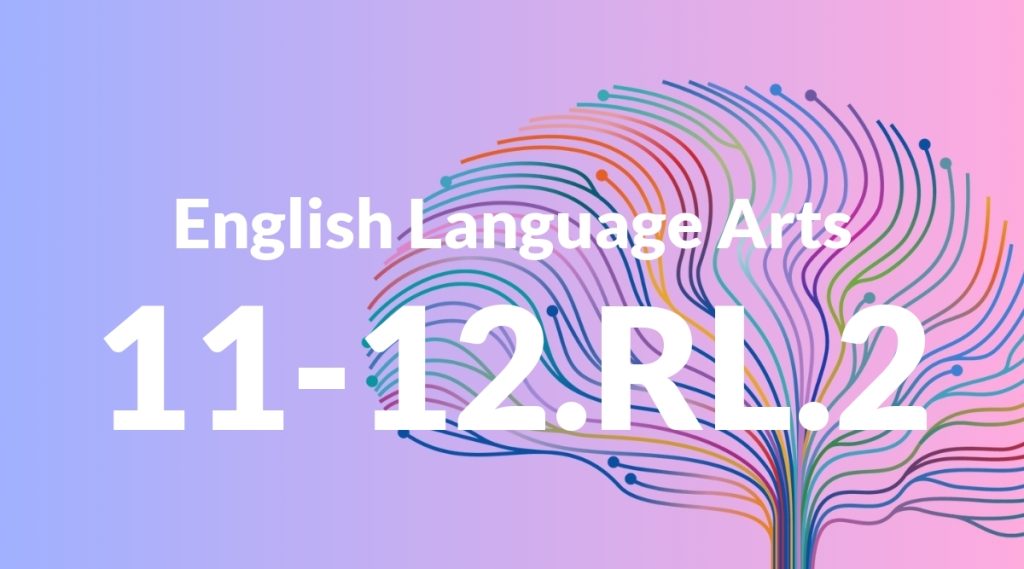Standard: 11-12.RL.2 – Determine two or more themes or central ideas of a text and analyze their development over the course of the text, including how they interact and build on one another to produce a complex account; provide an objective summary of the text.
Grade level: Grade 11-12
Subject: English Language Arts
Domain: Reading: Literature
Teacher Overview
This standard focuses on the ability to identify and analyze multiple themes or central ideas within a text, understanding their development and interaction to form a complex narrative. This skill is crucial for deep literary analysis and critical thinking, preparing students for advanced studies and real-world applications. Students should be familiar with basic theme identification and summarization techniques. They should also have experience reading and discussing literature in a structured manner.
Mastering this standard will enable students to perform sophisticated literary analyses, preparing them for higher-level coursework and enhancing their critical thinking skills.
Common Misconception 1
A common misconception is that themes are always explicitly stated. This is incorrect because themes are often implied through various literary elements such as plot, character development, and symbolism.
Intervention 1
To address this, teachers can provide guided practice in identifying implicit themes, using examples and non-examples from familiar texts.
Common Misconception 2
Another misconception is that a text can only have one theme. This is incorrect as most complex texts explore multiple themes that interact and build on each other.
Intervention 2
Teachers can use graphic organizers and thematic maps to help students track and analyze multiple themes within a text.
Prerequisite Knowledge
Students should have a basic understanding of identifying themes and central ideas in simpler texts, as well as experience in summarizing texts objectively.
Subsequent Knowledge
After mastering this standard, students will be able to conduct more nuanced literary analyses, comparing themes across multiple texts and genres, and applying these skills in advanced literary criticism and research projects.
Instructional Activities
- Thematic analysis essays
- Group discussions on theme development
- Creating thematic maps
- Comparative analysis of themes in different texts
- Interactive read-alouds with thematic focus
- Developing multimedia presentations on themes




